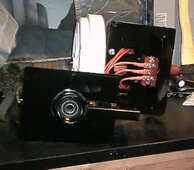Zwy
Solar Wizard
That what the fella that built his own and hung the long heavy cord told me. It required a tower though that had a opening in the middle. If mounted on a long skinny pole and with guy wires the cable will wrap around.I dont use a slip ring, I convert to DC on the turbine then run a pair of feeds down the pole. When I had it in free rotation I never saw the feed lines bind, it would wrap once maybe twice and then unwind itself. Since then I have locked it out from a full 360 since my winds are either from NW or from SE, so maybe 200 degree is all I allow, so winding is no longer something I am concerned with.
Prevailing wind here is the same as yours except when a bad storm in winter is coming. It will blow straight out of the east and usually a stronger wind. Right before a heavy winter storm would be the perfect time to grab all the output for charging up the battery bank.
If the price is cheap enough, it might be better long term to have a pair of units, one pointed NW to SE and the other SE to NW. No need for a slip ring. It probably would require locking down the rotor on the unit not being used. This prevents wear and extends lifespan.



